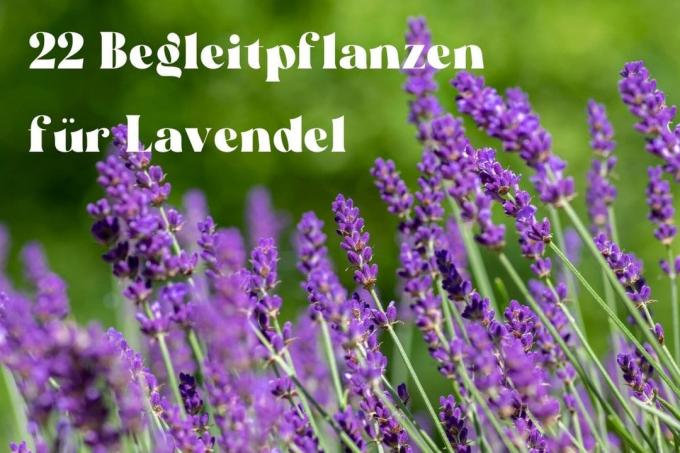
table of contents
- Herbs
- Perennials and other flowering plants from B to F
- Perennials and other flowering plants from H to L
- Perennials and other flowering plants from M to R
- Perennials and other flowering plants from S to Z
- frequently asked Questions
Lavender (Lavandula angustifolia) can be combined with numerous plants that also prefer a dry and sunny location in the garden. We introduce you to the most beautiful accompanying plants for beds and pots.
In a nutshell
- needs a lot of sun, warmth and dry soil
- Choose species with the same location and soil requirements
- other Mediterranean species very well suited
- Violet lavender goes very well with white or yellow blooming companion plants
- also blooms in blue, white and pink
Herbs
Oregano (Origanum vulgare)
This popular herb is also known as wild marjoram or wild dost. It originates from the Mediterranean countries, where it grows wild in warm, dry places.

- sunny, warm location
- permeable, poor soil
- only fertilize with ripe compost
- blooms between July and September
- attracts bees and butterflies
Rosemary (Rosmarinus officinalis)
Rosemary is at home on sunny rocky slopes in the Mediterranean. With us, the shrub that needs warmth is not winter hardy, apart from special varieties such as 'Arp'.
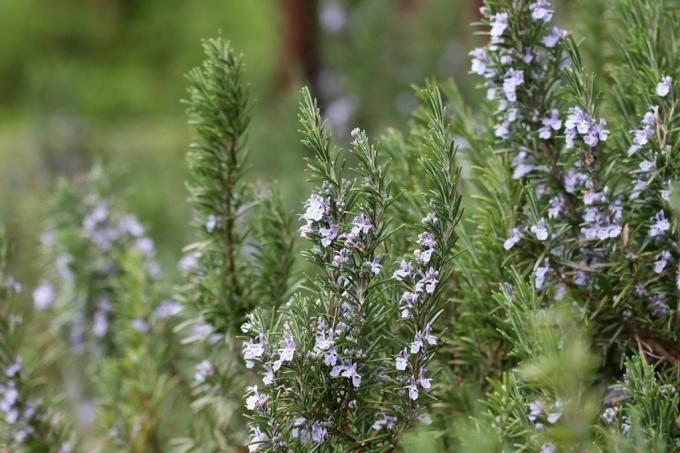
- lots of sun and warmth
- permeable, humus-rich soil
- Growth height up to approx. 100 centimeters
- evergreen subshrub
Sage (Salvia officinalis)
Sage comes in many different varieties, some of which have attractive variegated foliage. Like all Mediterranean herbs, this companion plant also needs a sunny and warm location.

- woody perennial
- will be approx. 80 centimeters high
- pretty purple flowers
- blooms between June and August
Thyme (thymus vulgaris)
There is also a large variety of thyme varieties, which differ not only in appearance, but also in their scent. Lemon thyme, for example, is very pretty with its brightly colored leaves and purple flowers.

- flat-growing subshrub
- will be up to approx. 40 centimeters high
- evergreen
- blooms between May and October
Tip: So-called summer thyme, also known as French thyme, grows quickly, but is sensitive to frost. The German or winter thyme is much more resistant.
Lemon balm (Melissa officinalis)
Lemon balm in bloom is also a popular bee plant.

- grows up to a meter high
- robust and hardy
- bushy growth
- white flowers from June to August
Tip: You can make a refreshing tea from the tender, young leaves.
Perennials and other flowering plants from B to F
Blue rattle flower (Catananche caerulea)
This perennial makes pretty purple or blue cup-shaped flowers that bloom well into autumn.
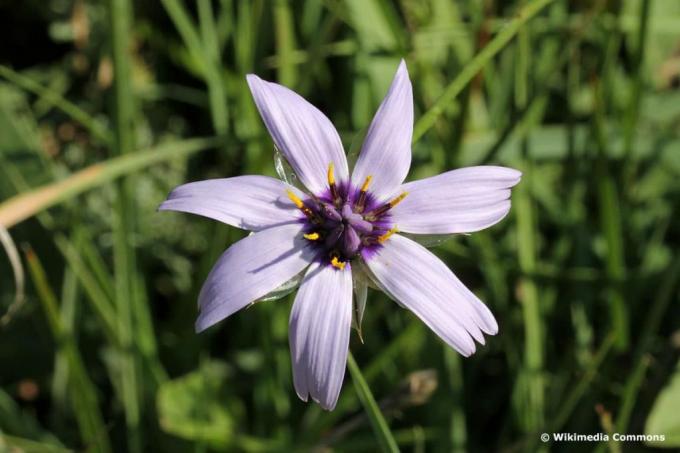
- Height of growth 40 to 80 centimeters
- Flowering period June to September
- valuable nectar and pollen plant
Curry herb (Helichrysum italicum)
The bright yellow flowers of the species, also known as the Italian straw flower, form a beautiful contrast to the purple flowers of lavender as a companion plant.
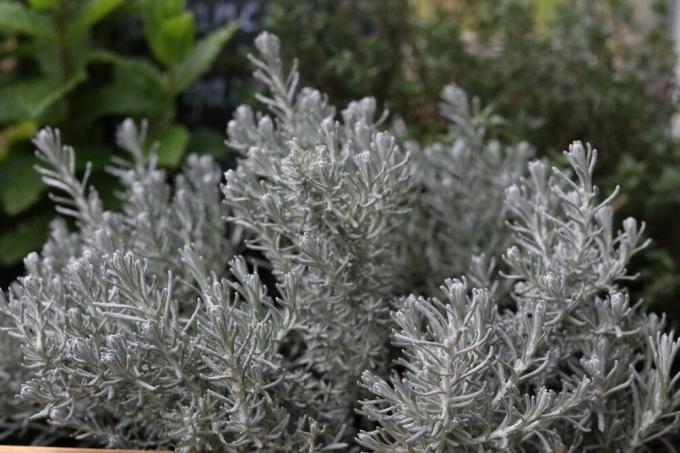
- subshrub up to 90 centimeters high
- densely bushy growth
- blooms from July to September
- light fragrance
Tip: The curry herb is also an old herb and medicinal plant. A tea made from leaves is said to help against coughs, for example.
Sedum
High sedum species can withstand a lot of drought and need full sun. Otherwise they are very undemanding.

- Thick leaf plant
- Growth height up to 70 centimeters, depending on the variety
- Flowering period August to October
- attract butterflies and bees
Tip: Sedum can be combined not only with lavender, but also with grasses and pillow asters.
Lady's Mantle (Alchemilla)
The felt lady's mantle (Alchemilla glaucescens) and the silver lady's mantle (Alchemilla hoppeana) are particularly suitable for dry and poor locations.
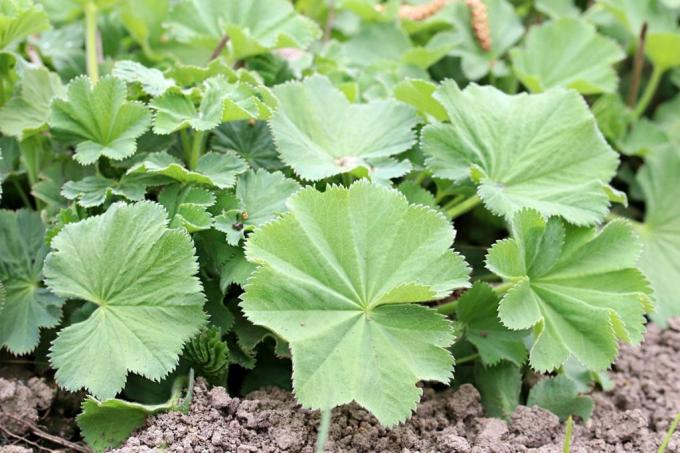
- pretty yellow single flowers
- very long flowering time into October
- popular bee food plant
Perennials and other flowering plants from H to L
Holy herb (Santolina)
The evergreen holy herb is ideal for stone and gravel gardens.
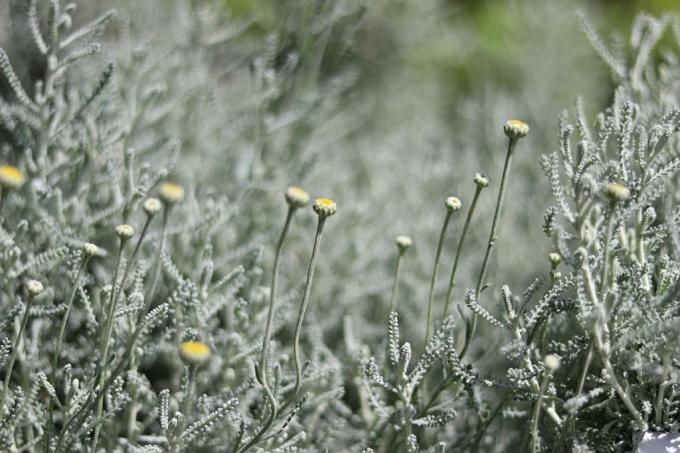
- heavily branched subshrub
- hairy leaves
- Flowering period from June to August
- yellow or white flower heads
Carthusian Carnation (Dianthus carthusianorum)
The native Carthusian carnation is also known as stone carnation and is characterized by its unpretentiousness. These and other types of carnation can be combined perfectly with lavender.

- Growth height up to 60 centimeters
- Flowering period June to September
- purple cup-shaped blossoms
- smell subtle
Mullein (Verbascum)
The high peduncles of these attractive summer flowers look like noble giant candelabra. With their yellow flower candles, mullein can be wonderfully combined with lavender.

- Height of growth 150 to 250 centimeters
- Flowering period June to August
- sow themselves
- well-known medicinal plant
Lupine (Lupinus)
Lupins belong to the family of butterflies and with their tall flower candles in white, yellow, red, pink, blue or purple they form wonderful groups - also as accompanying plants to lavender.

- Height of growth 80 to 120 centimeters
- Flowering period May to July
- Cut off withered for re-flowering in September
- very robust and grow almost anywhere
Perennials and other flowering plants from M to R
Girl's eye (coreopsis)
The girl's eye, which belongs to the composites, is characterized by tireless, months-long summer bloom.

- bright yellow flowers
- Height of growth 30 to 100 centimeters, depending on the variety
- Flowering period July to September
- nice contrast to blue lavender
Tip: Coreopsis grandiflora 'Cut Gold' has particularly large flowers.
Marguerite (Leucanthemum x superbum)
The tall white summer daisies from the family of Composites belong to the classic perennials and can be combined very nicely with lavender.

- Height of growth 50 to 100 centimeters, depending on the variety
- Plant spacing 50 to 80 centimeters
- Flowering period July to August
- Propagation by division and sowing
Tip: A bed with daisies, delphinium, poppy seeds, phlox and lupins as accompanying plants to fragrant lavender is very attractive.
Mary's bellflower (Campanula medium)
Mary's bellflowers form large, rounded bells that grow in abundance. There are filled and unfilled varieties in white, pink and purple-blue.

- Height of growth 40 to 80 centimeters
- Flowering period June to July
- Sowing May to June
- needs nutrient-rich soil
Delphinium
The delphinium with its striking, mostly blue flower panicles and growth almost as tall as a man is one of the most beautiful companion plants for lavender. It is best to choose white-flowered varieties.

- attract bees and bumblebees
- Flowering time between late June to September
- annual and perennial varieties
- also pink, red and purple flower colors
Perennials and other flowering plants from S to Z
Gypsophila (gypsophila)
The petite one Carnation family is covered with a veil of pink or white flowers at flowering time.
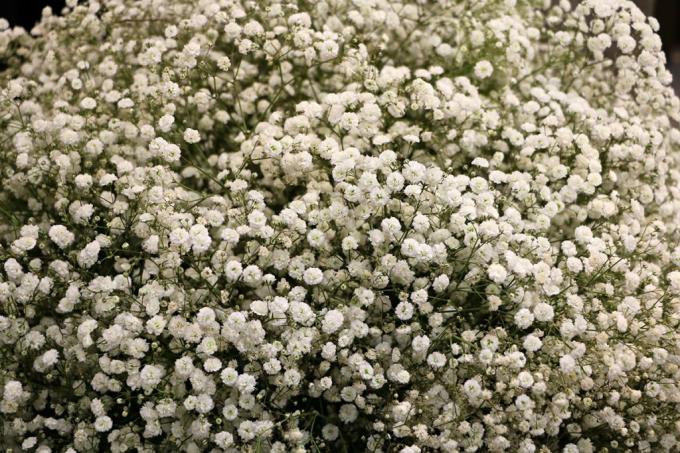
- different types and varieties
- nice to lavender especially Gypsophila elegans
- also attractive gypsophila (Gypsophila repens)
- as a fragrant gap filler between lavender bushes
Tip: The short-lived Gypsophila elegans blooms for an additional six weeks about six weeks after sowing. Sown at intervals of two to three weeks, you will have flowering gypsophila by autumn.
Scabiosis
Scabioses, also known as pincushions, bloom on long stems in pink, lavender, or dark purple. They belong to the cardiac family.
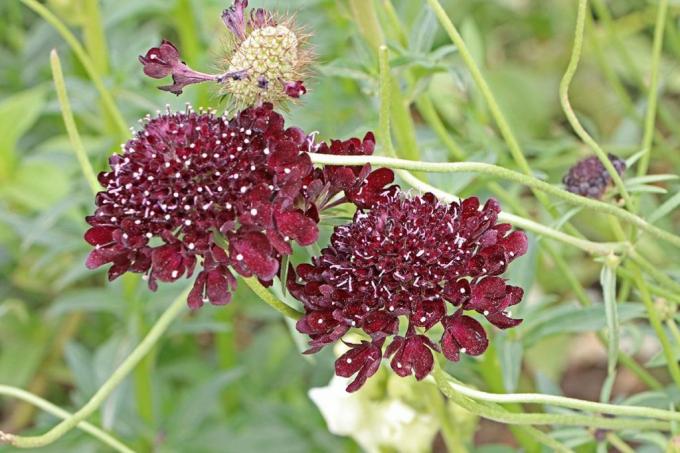
- densely double flowers
- Height 40 to 90 centimeters, depending on the variety
- Flowering period July to November
- annual, sowing from March
Spider Flower (Cleome spinosa)
The spider flower is an attractive annual plant with distinctive inflorescences in white, lavender or pink and an ideal companion plant for lavender.

- prefer from March
- 90 to 100 centimeters in height
- Flowering period July to September
- works best in group plantings
Hollyhock (Alcea rosea)
The huge one Mallow family is an unmistakable eye-catcher with its colorful flowers.
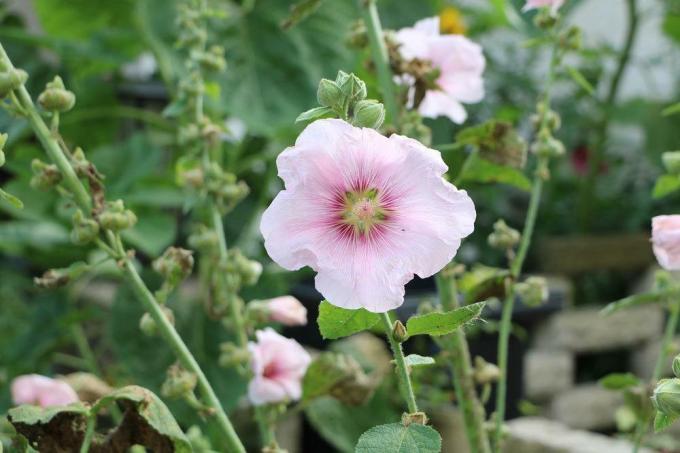
- Flowers of many colors
- Growth height two to three meters
- Flowering period July to September
- need nutrient-rich soil
Tip: To prevent the long shoots from kinking, you should attach them to a planting stick or similar. ä. tie up.
Ornamental onion (Allium)
Of the Ornamental onion belongs to the bulb flowers and delights with its spherical flower balls in white, red, pink or purple.
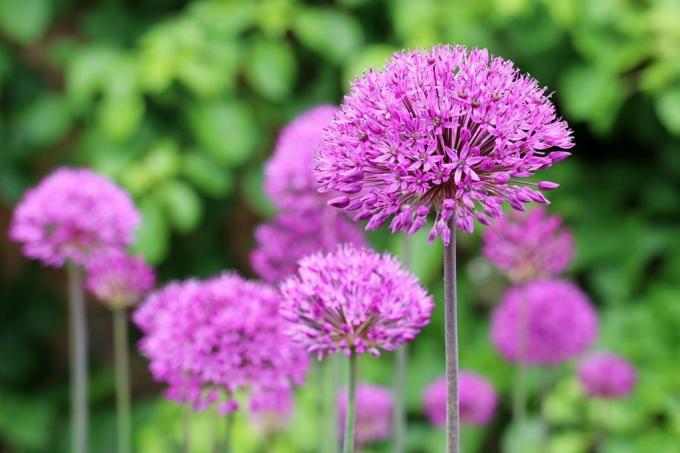
- belongs to the Amaryllis family (Amaryllidaceae)
- many different types and varieties
- Growth height up to 150 centimeters
- Flower balls with a diameter of up to 25 centimeters
frequently asked Questions
Roses and lavender make a wonderful combination and are therefore often planted together. This classic companion plant does not appear in our list for two reasons: On the one hand this arrangement is well known and it is important to us to give you a few new ideas present. On the other hand, the two species also have very different requirements in terms of location, soil and care, which can lead to problems.
When fully grown, a lavender bush becomes about 30 to 40 centimeters wide and just as high. If you want to plant several lavender plants together, the planting distance should be at least 30 centimeters. How much space you leave between other species depends on their expected growth and can therefore vary considerably.
In addition to the real lavender (Lavandula angustifolia) there are other types that you can of course combine with each other. The crested lavender (Lavandula stoechas), for example, is very popular, although it is not hardy and therefore has to be replanted every year. The so-called Provence lavender (Lavandula x intermedia) is a particularly strongly fragrant hybrid breed. With a height of up to 100 centimeters, the little-known Speik lavender (Lavandula latifolia) is significantly larger than other types of lavender.
